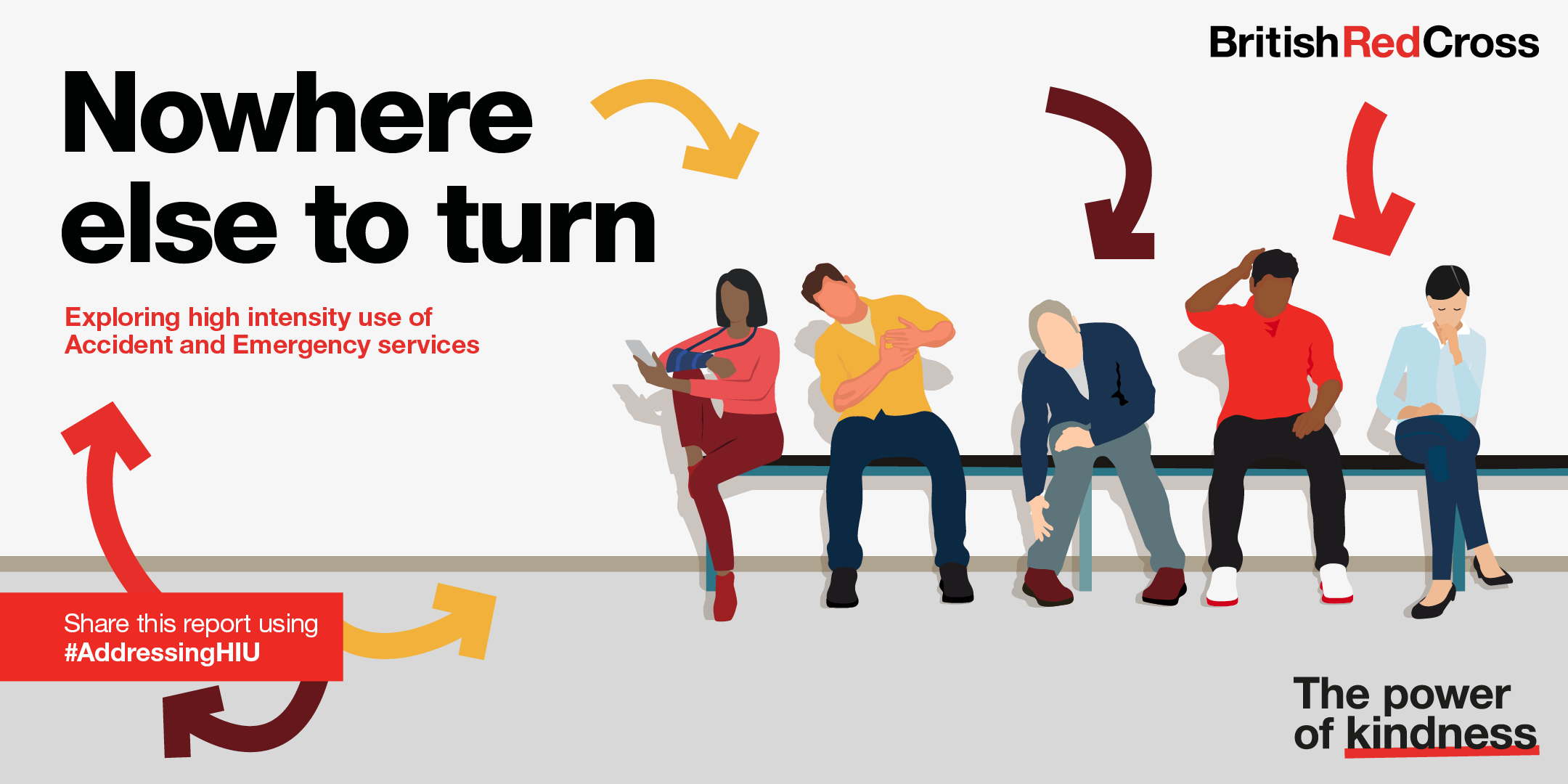Case study
Nowhere else to turn
High intensity use of A&E is a significant challenge, not just in England but around the world. British Red Cross commissioned this research to shine a light on the issue of high intensity use and to bring together fresh insights from previously published literature and data, new data analysis conducted as part of this research and, crucially, the views of people who have experience of frequently attending A&E and the people who work most closely with them.

Background
The British Red Cross recently published their new health inequalities report, Nowhere Else to Turn, which explores the complex and often non-clinical reasons for high intensity use at A&E, listening to those with lived experience.
People who frequently attend Accident and
Emergency (A&E) are few in number, but
their impact on health systems is significant.
They make up less than one per cent of
the population, but account for a significant
proportion of all A&E attendances, ambulance
journeys and hospital admissions. They cost
the NHS at least £2.5bn per year.
This report draws on in-depth analysis of health data from North West London, undertaken in 2020 by Imperial College Health Partners – we analysed frequent attendance among a cohort of 2.2 million patients.

Methodology and data
This research aimed to explore comprehensively the high intensity use at A&E in England. It aimed to answer the following questions, including:
– What are the demographic characteristics of people attending A&E regularly?
– What triggers high intensity use of A&E services?
– What patterns can we observe in people’s patient journeys?
– How could people attending A&E regularly be supported better?
In order to answer these questions a mixed-method approach was used, including:
– a literature review
– a quantitative analysis of a novel 6-year longitudinal nationwide dataset covering 367,000 people frequently attending A&E
– a quantitative analysis of emergency department diagnosis data from 3 major acute trusts
– 14 semi-structured interviews with people who were frequently attending A&E
– 17 expert interviews with health and care professionals supporting people who were frequently attending A&E services
– Imperial College Health Partners Research in North-West London analysed frequent attendance among a cohort of 2.2 million patients
What the data shows
- While only 0.67% of the English population attend A&E frequently, as a group they are significantly over represented in emergency care, accounting for 16% of all A&E attendances, 29% of all ambulance journeys and 26% of all hospital admissions in England.
- Our research estimates the cost to the NHS of the high intensity use of A&E to be £2.5bn per year.
- The mortality rate among people aged between 30 and 49 who frequently attend A&E is 7.5 times higher than among this age group in the general population.
- People who frequently attend A&E often feel unheard, leading to dissatisfaction and disengagement with health services more generally.
- Supporting people who frequently attend A&E would have a wide range of benefits, including improving people’s life expectancy, quality of life and experience of care as well as reducing pressures on the healthcare system.
- Mortality rates are higher among people who frequently attend A&E than among the overall population of A&E attenders.
- The risk of mortality is highest among the younger members of this group. Those attending very frequently and with especially high levels of self-harm and suicidality are also especially vulnerable.
Using the data to make a difference
The data enabled British Red Cross to make a series of recommendations:
NHS England and Improvement and the Department of Health and Social Care should:
– Update guidance on the development of High Intensity Use services to reflect new NHS structures, including ensuring that Integrated Care Systems develop strategies for high intensity use across their areas
– Incentivise improved recording of patient data and information-sharing regimes between emergency departments, community health and non-clinical services
– Agree a consistent set of national measures to evaluate the impact of High Intensity Use services and to build the evidence to support investment.
